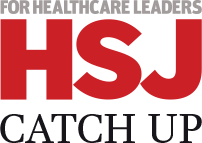The NHS is awash with information about hospital performance but it is not always translating into a safer acute care system for patients, says Alex Kafetz
Sir Ian Kennedy lamented that the trust “was awash with data from one source or another − what was lacking was information” during his 2001 inquiry into children’s heart surgery at Bristol Royal Infirmary.
‘What is worse is that some of the old chestnuts are still being used to explain away high rates’
Richard Smith announced that following Bristol everything “changed utterly” in his seminal BMJ editorial.
The NHS is still awash with information 13 years on (for acute mortality at least) and nothing has changed. The summary hospital-level mortality indicator, the risk adjusted mortality index, healthcare evaluation data, at least four hospital standardised mortality ratios across three suppliers, and a plethora of NHS and independent “observatories”, are publishing death rates at unit or consultant level.
Hospital failings continue
This information, or “some understanding of what the data meant” as Sir Ian called for, is seemingly all there. And yet hospital failings have continued to be identified: Basildon, Stafford, Colchester, the “Keogh 11” and so on.
‘We can’t and shouldn’t stop the flow of data into information and we shouldn’t monopolise right and wrong’
What is worse is that some of the old chestnuts are still being used to explain away high rates: “The coding is wrong”; “Our community beds skew the data”; “Yes, we’re high on your measure but we believe the Health and Social Care Information Centre’s is one that says we’re OK”; “Yes, we’re high on the information centre’s measure but we believe in another measure, which says we’re OK”.
I know of three or four instances of trusts sending legally written cease and desist letters to various NHS and private organisations to try to stop them publishing robustly designed information based on available NHS data, which indicates that they have high death rates (or another measure of possible poor performance).
So what can be done? Obviously the answer is not to roll back. We can’t and shouldn’t stop the flow of data into information and we shouldn’t monopolise right and wrong, giving the power to a government agency or putting the “answer” out to tender to a preferred supplier.
Use information as intended
There are a few quick things that can be done to ensure this information is used in the way Sir Ian, and others, intended.
First, the information centre must finish the job it started on the SHMI. It publishes one value with two bandings and a number of warnings on its site. The challenge given to them by Sir Bruce Keogh was to define a consensus measure.
Frankly the group bottled it by publishing alternatives and caveats. It needs to be reconvened with someone experienced enough to deliver this project to a conclusion as chair.
The best measures
Second, each NHS acute trust should define, publish and track a hospital level mortality rate that best measures their hospital.
‘I’m not sure whether the information revolution has happened. We do, however, have a much more transparent system and hospital mortality is in the public domain’
If they feel palliative care is a problem, adjust for this. If they think their community patients are skewing the figures, take them out.
To stop the mistake made with quality accounts (where hospitals tended to publish only areas where they were doing well), this measure should have “light touch” approval from commissioners, the trust’s clinical governance committee and the Care Quality Commission.
Not only should the trust track this measure regularly but they should ensure they have access (either internally or through a supplier) to speciality and ward level drill downs and patient records.
The CQC will still have to use the SHMI and other data to target inspections but if the trust is monitoring their measure properly, they should be able to explain to the CQC the difference and how to use in-house data to assure them there are no quality of care issues.
Cease and desist
Third, it should be made clear (perhaps by Sir Bruce Keogh) that it is frowned upon for any trust or foundation trust to issue a cease and desist letter to any reputable organisation planning to publish or republish information based on NHS data.
Where an organisation does issue such a letter they should inform the CQC and be compelled to publish all legal costs relating to this correspondence.
Finally, organisations that dispute data due to coding problems should immediately report this miscoding as a serious untoward incident (if nothing else, they will be using the miscoded information to bill commissioners) and follow agreed protocols to have this investigated and resolved as soon as possible.
More transparency
I’m not sure whether the information revolution has happened. We do however, thanks to Sir Ian and many other pioneers, have a much more transparent system and hospital mortality is in the public domain.
The next steps must be to ensure information is accurate, end the denials and make sure that now the information is here, it is used as envisaged after Bristol − to protect patients.
Alex Kafetz is a director at ZPB, a member of the Cabinet Office open data user group and has edited the last six Hospital Guides on behalf of Dr Foster Intelligence



























No comments yet